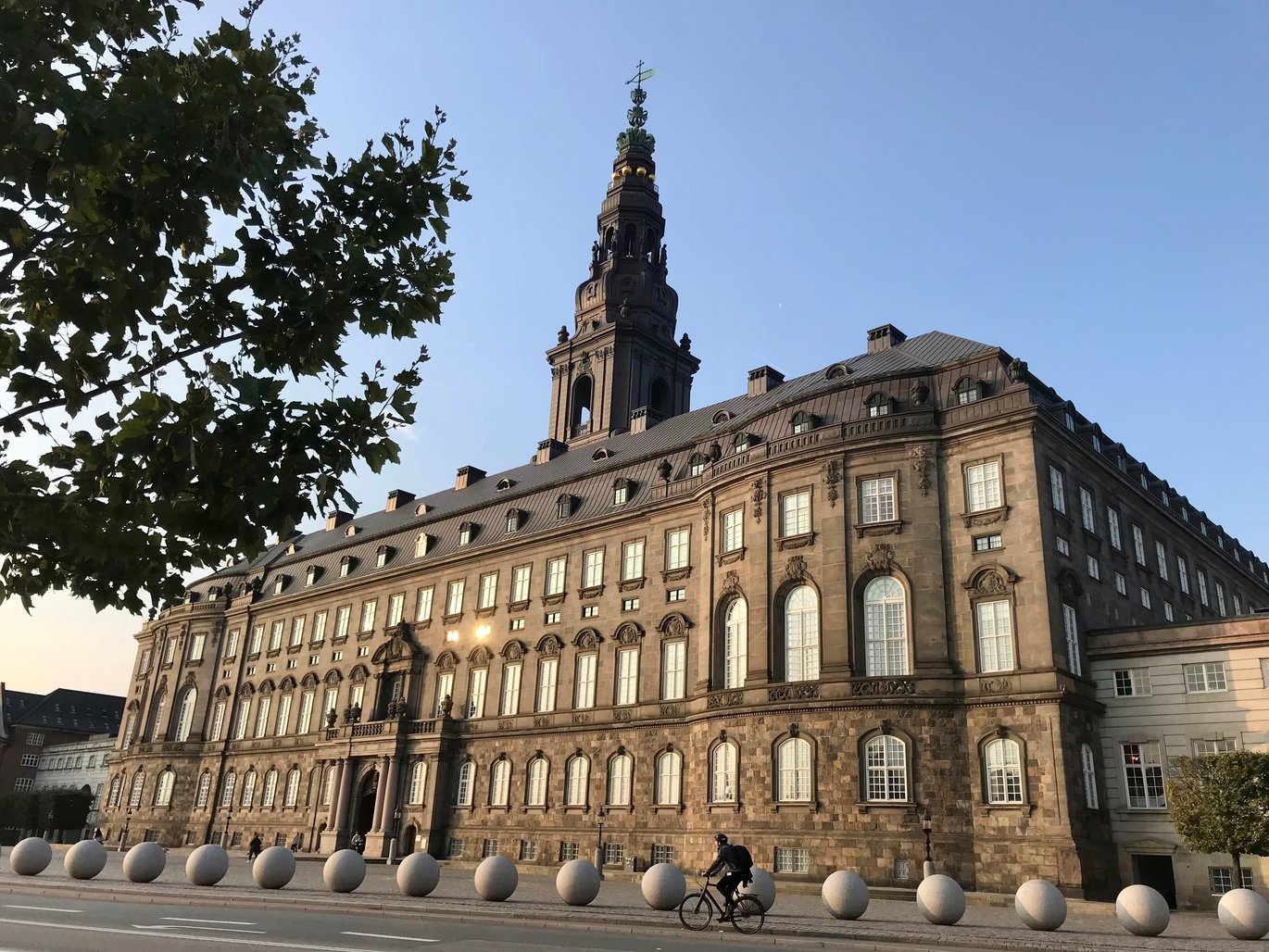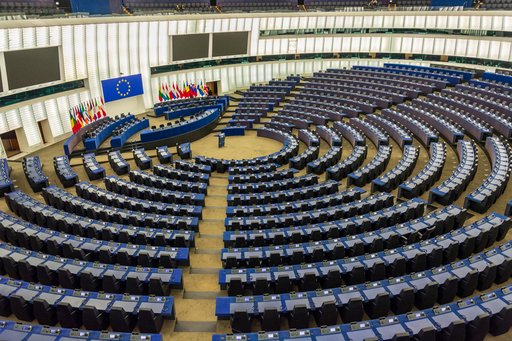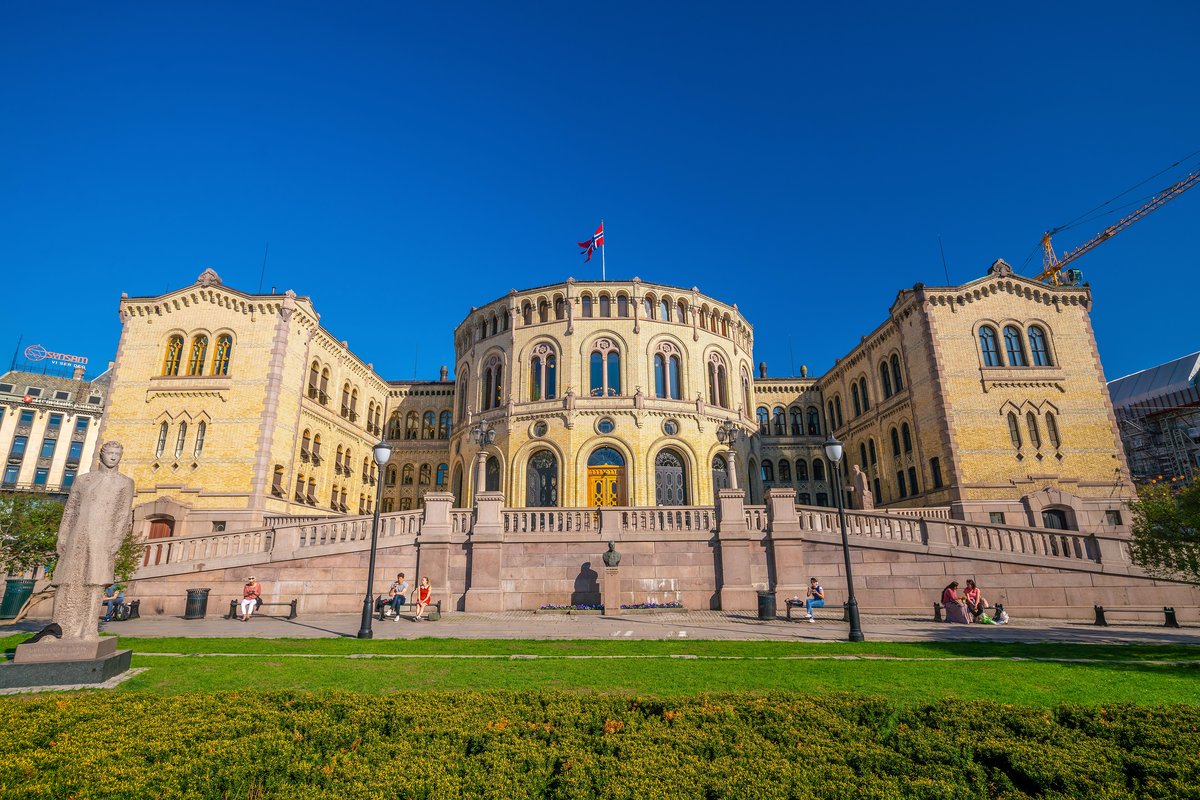Democracy in the Scandinavian 1990s
Nordic conceptions of democracy are challenged and change over time.

Summary: In the Scandinavian countries, the 1990s saw a change in how democracy functioned – and was seen to function – characterized by the encroachment of international organizations, less public participation, as well as the rise of a more consumer-based societal model.
The 1990s is – at least in the West – often seen as starting with the fall of the Berlin wall in 1989, and finishing with the terror attacks of 9/11. The decade was initially linked to Francis Fukuyama’s idea of the end of history and the thought that the world appeared to be heading towards a broad consensus in support of liberal democracy. Defending his country’s involvement in the Gulf War, the president of the United States George Bush famously proclaimed in 1990 that a harmonious new world order could emerge.
Although less dramatic than in most places, these global events of course resonated in the Nordic countries. However, instead of looking at the 1990s as solely an era of optimism or a holiday from history, it is important to look at the dilemmas that appeared during the decade. Scandinavia also experienced certain transformations that lead political actors to question the nature of the highly celebrated Nordic model, and, while this was multilayered, the changes in the perception and approach to democracy were particularly interesting.
During the 1990s in the three Scandinavian countries of Denmark, Norway and Sweden, three trends emerged:
- Politicians and citizens were concerned about the transfer of power to international organizations and the decline in the high level of trust and public participation that had previously characterized Nordic democracy.
- The social democratic hegemony of the previous decades was challenged as the left gave up the quest for economic democracy.
- The rise of the right opened new divisions in the Nordic countries, which pre-empted the value wars of the following decades.
I will take each of these points in turn in this short article on the cultural and political currents in Scandinavia during the 1990s.
International and domestic pressures on Nordic democracy
As the end of the Cold War signaled democracy’s triumph over authoritarianism, the status of democracy was questioned in debates across the Nordic countries. As David Runciman argues in his 2014 book about the western history of democracy, The Confidence Trap, the prevailing mood in 1989 was not of democratic triumphalism but anxiety and uncertainty. Despite the 1990s being seen as the beginning of a new world order, politicians and academics were concerned about the flaws in Nordic democracy that had been of growing concern and academic interest since the 1970s. There was concern about a post-political reality consisting of weakened political parties and less public participation, leading many to fear that the highly celebrated model of Nordic democracy was somehow not fit for the post-industrial world.
Since the mid-twentieth century, the Nordic countries had cherished a unique model of participation and representation that fostered equality. During the industrial age, mass political parties, trade unions and farmers’ associations experienced high levels of support and participation that were rarely seen in other places around the world. However, during the 1990s, signs of decay emerged which dominated the academic and political discourse. The notion of a “spectator democracy” expressed parts of this concern, which meant a democracy in which people showed a general interest in politics but where there were low levels of participation in political parties, voluntary associations and trade unions.
Maktutredninger - Investigations on power and democracy
Consequently, governments in the three Scandinavian countries showed significant interest in measuring democracy through state-financed investigations on power and democracy. Norwegian scholars had piloted the first investigation of power relations in Norwegian society in the late 1970s (Maktutredningen) and, from 1985–2003, Denmark, Sweden and Norway (again) conducted investigations on the conditions of democracy (the Swedish Maktutredning from 1985-1990 and Demokratiutredningen from 1997-2000, the Danish Magtudredning from 1997-2003 and the Norwegian Makt- og demokratiutredning from 1996-2003).
Leading scholars from across the disciplines took part in surveys that sought to understand the development of democracy in each country. Surprisingly the conclusions diverged quite a lot. Whereas the majority involved in the Norwegian investigation of the 1990s concluded that democracy was in decay due to a weakening of links between the people and the decision-making process, the Danish commission held that democracy was largely well-functioning and lived up to the standards of a pluralist democracy.

European integration and the potential risk of a democratic deficit that it brought with it was extremely relevant to all three investigations. In fact, the frequently used term "democratic deficit" itself became ever-present in the debate about European integration in the 1990s as a critique of the alleged flow of power from the Nordic nation states to unelected bureaucrats in Brussels. The power investigations paid great heed to the influence of globalization and particularly integration into the European Union. Denmark had been a member since 1973, while Sweden and Finland joined in 1995, and Norway decided to stay out of the European Union for the second time in 1994.
As Ann-Cathrine Jungar has argued, the power investigations’ deviating conclusions displayed the three states’ historical legacies in relation to the EU and different normative points of departure on the modes of the operation of sovereignty and popular rule in increasingly internationalized political structures. The Danish investigations perceived that the loss of formal sovereignty by entering the European Union had been matched by a greater influence on European policies, whereas the pessimistic conclusions from the Norwegian investigation were related to an affiliation with the EU that did not allow Norwegian politicians to act as policy makers.
However, Scandinavian democracy on a national scale was not only challenged by outside forces such as European integration. An emphasis on local democracy also gained importance as a way to compensate for the growing influence of the welfare state. One of the important solutions to the problems of the time was seen as the changing role of the citizen and, more particularly, the call for decentralization and an increase in types of "user democracy" that could empower the users of welfare services, such as schools and daycare centers, or the establishment of senior citizen councils.
Diluted Social Democratic Ideals
Regarding the citizen as a consumer of welfare services was an important part of the Nordic implementation of market ideas in the public sector. In the 1990s, the Social Democratic parties in particular became the vanguard of neoliberal reforms in Denmark, Norway and Sweden. In all three countries, these political parties had, since the interwar years, played a highly influential role in shaping the welfare state with comprehensive social, housing and unemployment policies that protected the population against poverty and focused on economic growth. However, from the late 1980s, the Social Democratic parties in Scandinavia began to alter their ideological foundation, focusing on spreading market principles in society and assigning the individual citizen more responsibility for their own lives.
The revisions of the social democratic ideology brought with it a new understanding of democracy. For social democrats, the idea of a broad concept of democracy was an important part of twentieth-century ideological thinking. Combined with their policies to shape future society, they understood democracy as a broad concept which spanned the political, social, economic and cultural spectrum. Social democrats generally had previously been able to maintain a firm vision for political democracy - as opposed to the communist interpretation of a people’s democracy - while maintaining a progressive view, with a foundation in concepts such as economic democracy.
Economic democracy was an important part of the social democratic vision throughout much of the twentieth century as it held a promise of equality and public control over the economy. However, in his 2021 book, Democracy and the Economy in Finland and Sweden since the 1960s, Ilkka Kärrylä shows how the idea of an economic democracy in Sweden and Finland lost momentum and disappeared from the political agenda of the Social Democratic parties during the 1980s and 1990s. For the first time since the advent of the labor movement, there was no significant difference between the understanding of democracy on the political right and the social democratic understanding of it. Instead, democratization and the idea of spreading democracy to other places in the world became more of a focal point to rally around - and not just for the Social Democrats, but even for most centrist political parties at the time.

The rise of new right-wing parties
Lastly, the dynamic forces in Scandinavian democracy came not from the left but from a re-orientation of the right. The 1990s saw the emergence of a culture war fostered in conservative movements eager to break with political consensus on mainly immigration. The rise of the populist right was perhaps strongest in Denmark and Norway where the Danish People’s Party (Dansk Folkeparti) and the Progress Party (Fremskrittspartiet), respectively, experienced rapid electoral success. The precursor to this movement can be traced back to the 1970s when strong critics of the welfare state started attracting working class voters by attacking the bureaucratic and expensive public sector. However, the movements in both countries transformed during the 1990s to resemble more the likes of the French far-right party Front National.
In the 1990s, the politicians of the right became much more concerned with culture wars, immigration and Islam in the Nordic countries, which would eventually make them some of the more successful right-wing parties in Europe. Similar to Republicans, such as congressman Newt Gingrich in The United States, that started a culture war against liberal America at around the same time, the new right in Scandinavia questioned the dominant ideological movements and metanarratives of democracy that had created the modern Nordic states. Critique of representative democracy was part of the new right calling for referenda on immigration. One of the leading intellectuals of the Danish right wing Søren Krarup even questioned whether parliamentary democracy could save the Danes from the catastrophe of immigration.
However, the rise of the new right – and the other threats to democracy outlined here – did not of course mean the end of democracy in the Scandinavian countries. They did, however, manage to significantly influence parliamentary divisions as well as highlight new political divisions on the ground, many of which have lasted well into the twenty-first century.
History can shed light on challenges and transformations of the Nordic conceptions of democracy
This article is published in response to readers' interest in Nordic democracy and challenges to it.
Further reading
- Ann-Cathrine Jungar, ‘Three Nordic Power Investigations on the Repercussions of the European Union on Sovereignty and Democracy’, Journal of Contemporary European Studies, 21,3 (2013) pp. 372-381.
- Ilkka Kärrylä, Democracy and the Economy in Finland and Sweden since the 1960s: A Nordic Perspective on Neoliberalism. (Palgrave Macmillan; 2021).
Links:
- Neoliberalism in the Nordics: Developing an absent theme (Research group with more literature).


